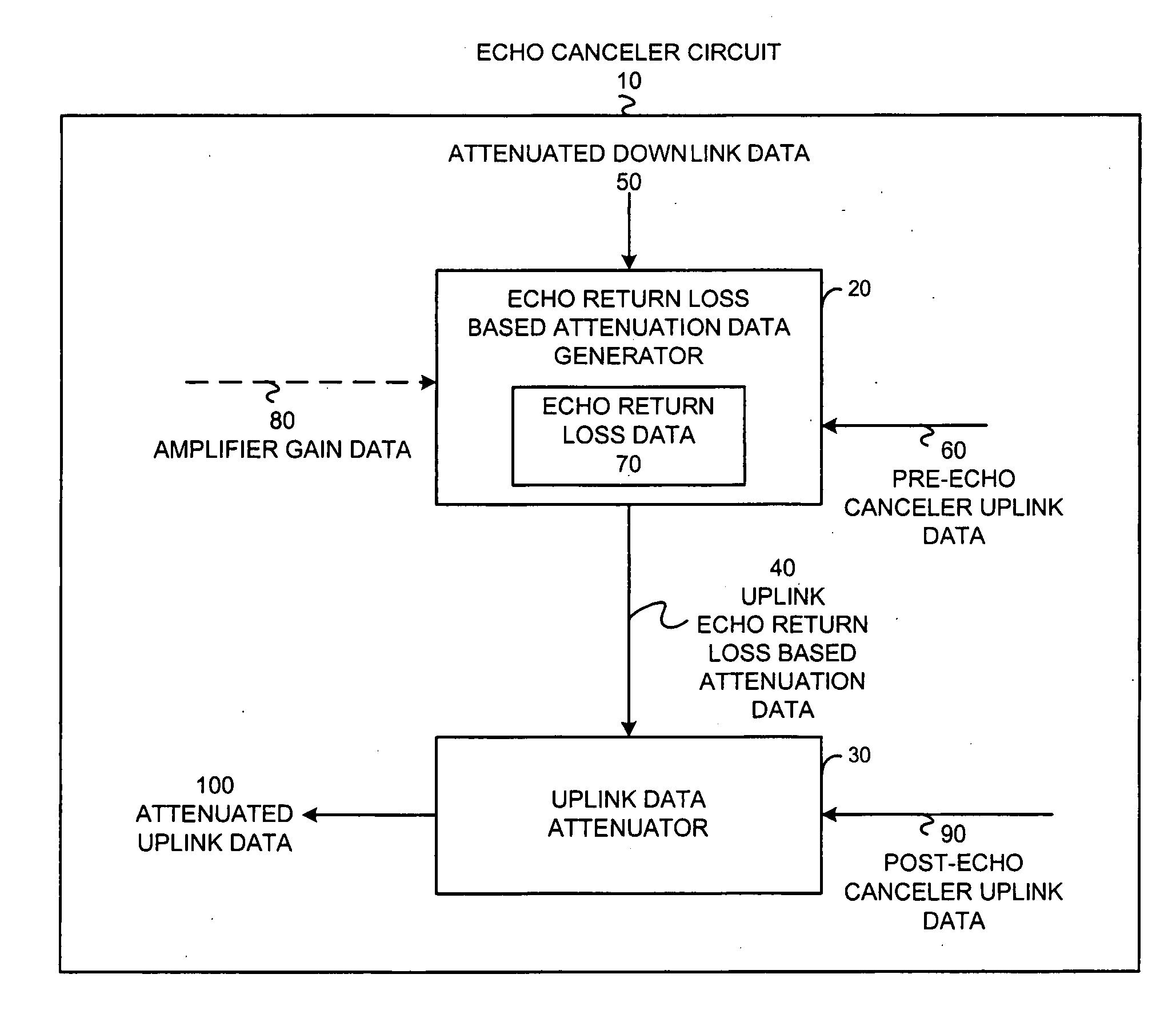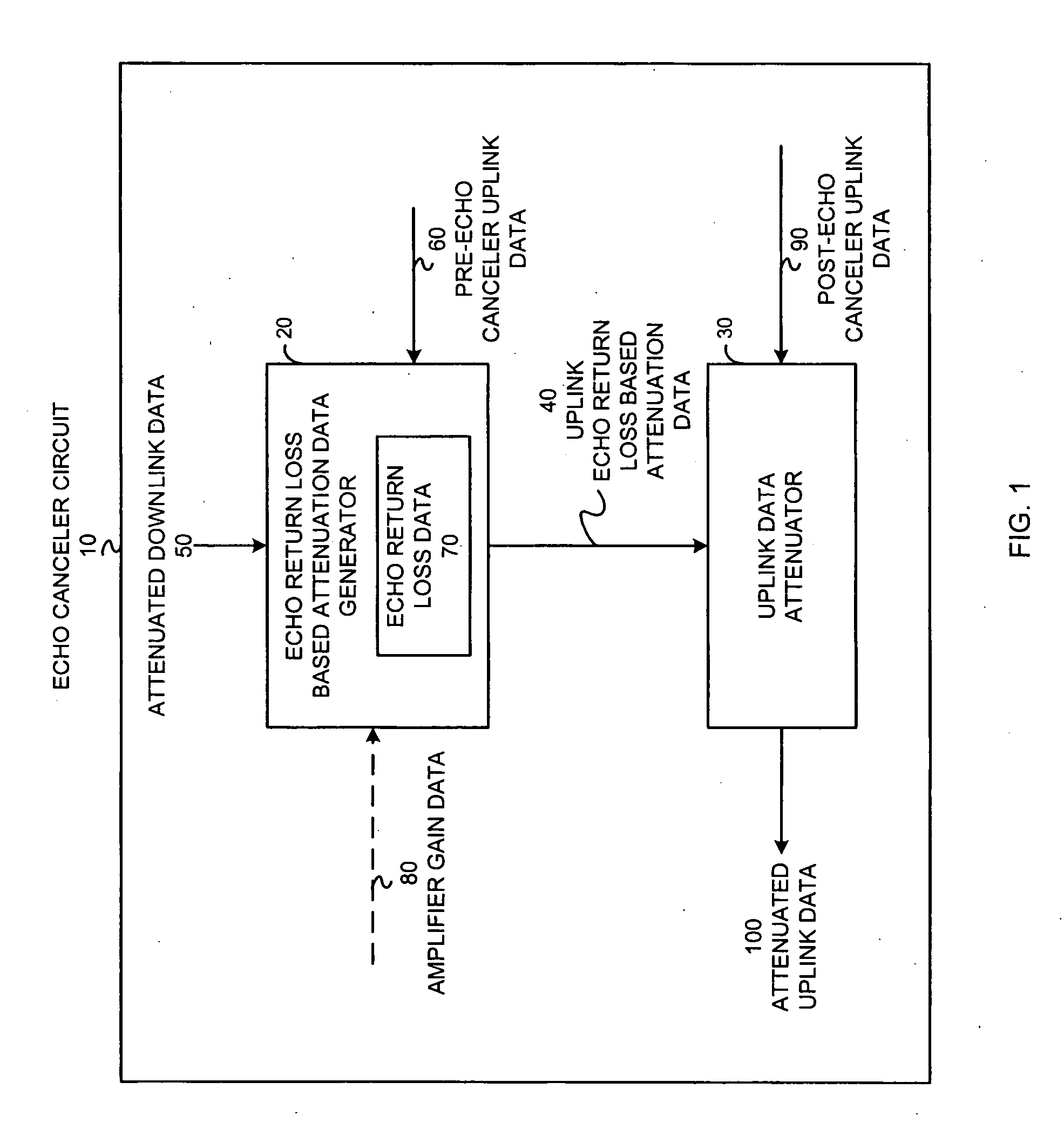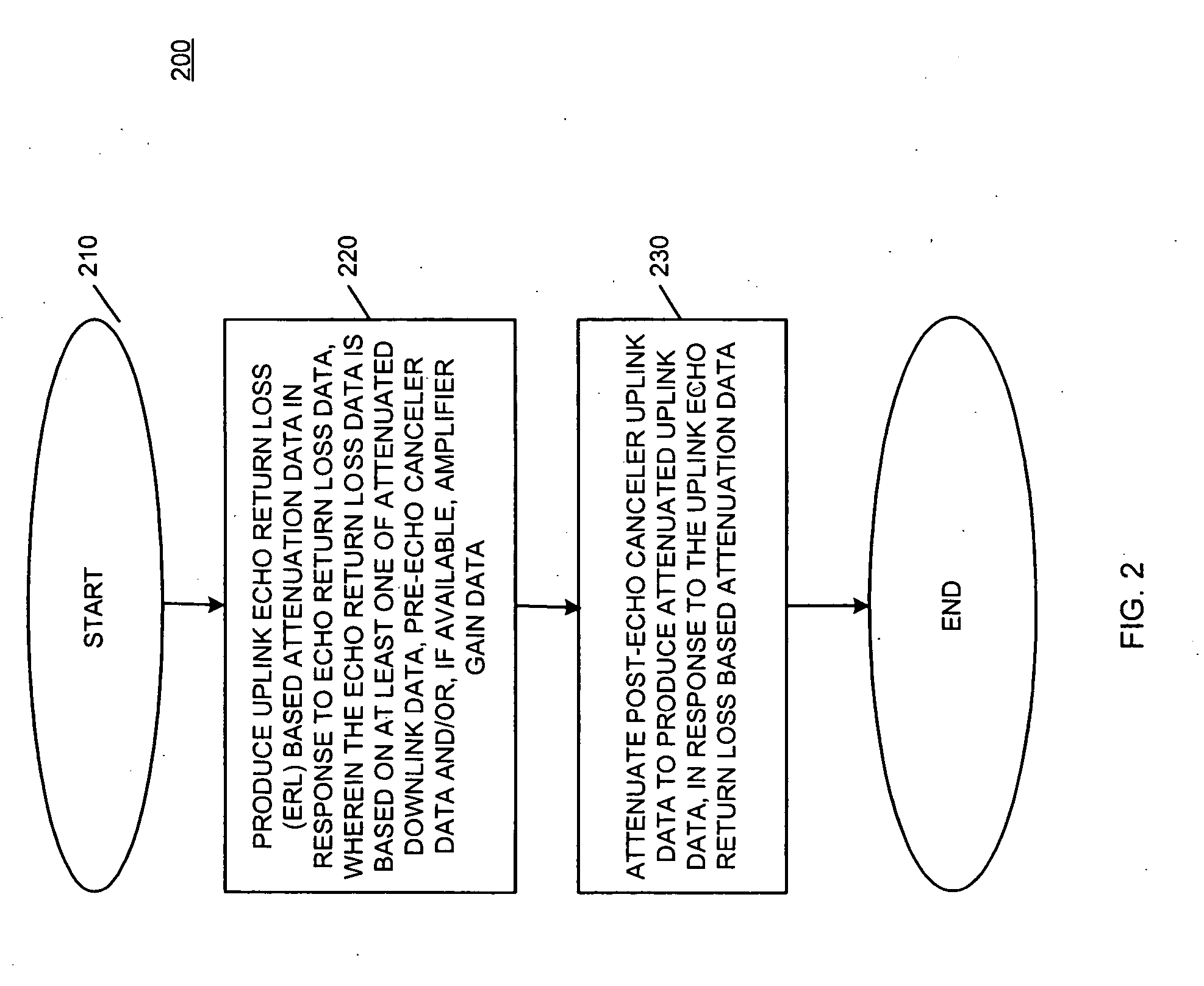Echo canceler circuit and method
a canceler and circuit technology, applied in the field of communication systems, can solve problems such as inability to work normally, inability to cancel, and change the data of pre-echo canceler uplink, and the estimation of echo data may contain errors
- Summary
- Abstract
- Description
- Claims
- Application Information
AI Technical Summary
Problems solved by technology
Method used
Image
Examples
Embodiment Construction
[0020] An echo canceler circuit and method attenuates at least post-echo canceler uplink data to produce attenuated uplink data in response to echo return loss data. The echo return loss data, according to one embodiment, is the ratio between the attenuated downlink data provided to the amplifier in an audio system and the pre-echo canceler uplink data received by a microphone. The echo canceler circuit includes an echo return loss based attenuation data generator and at least an uplink data attenuator. The echo return loss based attenuation data generator produces the uplink echo return loss based attenuation data in response to the echo return loss data, wherein the echo return loss data is based on at least one of: attenuated downlink data, pre-echo canceler uplink data and amplifier gain data. The uplink data attenuator attenuates the post-echo canceler uplink data to produce the attenuated uplink data based on the uplink echo return loss based attenuation data.
[0021] Among oth...
PUM
 Login to View More
Login to View More Abstract
Description
Claims
Application Information
 Login to View More
Login to View More - R&D
- Intellectual Property
- Life Sciences
- Materials
- Tech Scout
- Unparalleled Data Quality
- Higher Quality Content
- 60% Fewer Hallucinations
Browse by: Latest US Patents, China's latest patents, Technical Efficacy Thesaurus, Application Domain, Technology Topic, Popular Technical Reports.
© 2025 PatSnap. All rights reserved.Legal|Privacy policy|Modern Slavery Act Transparency Statement|Sitemap|About US| Contact US: help@patsnap.com



